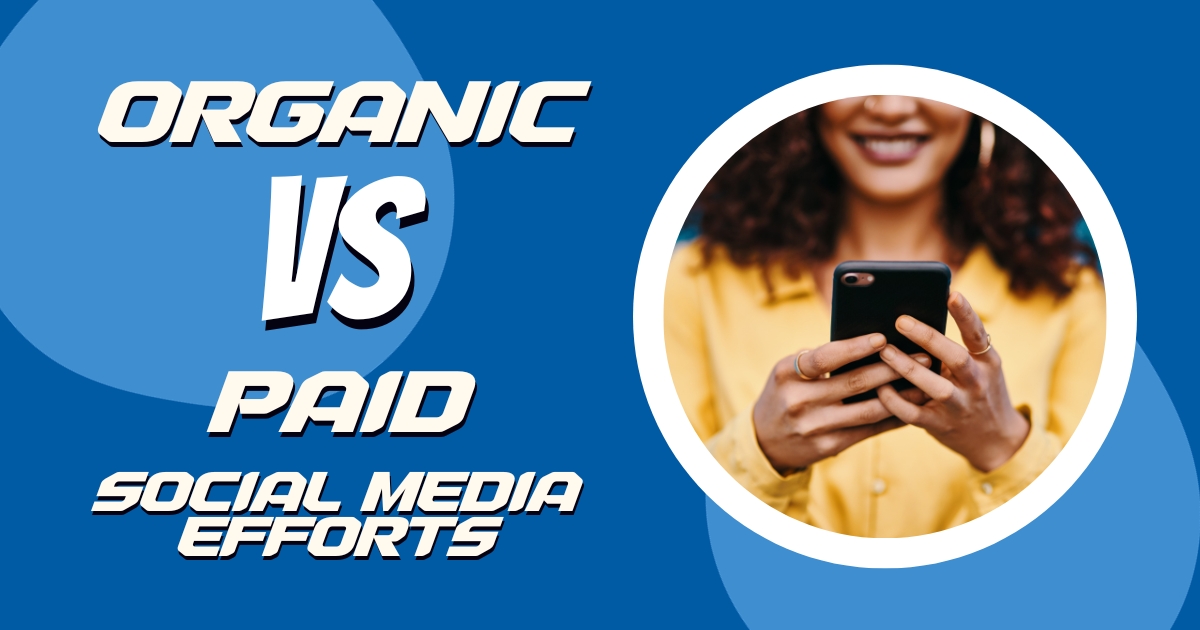
When it comes to social media marketing, businesses have two main strategies at their disposal – organic and paid efforts. Understanding the difference between the two can help you make informed decisions about where to put your resources and how to achieve your goals effectively. In this blog post, we will explore the distinctions between organic and paid social media efforts and guide you in selecting the most suitable approach for your business.
Organic Social Media Efforts: Nurturing Genuine Connections
- Authenticity:
Organic efforts are based on building real connections with your target audience. By sharing valuable and relevant content, addressing user questions and concerns, and actively engaging in conversations, you can establish an authentic relationship with your followers. - Long-term Growth:
While organic growth may take more time and effort, it has the potential for long-term sustainability. As your audience organically grows and becomes loyal to your brand, they are more likely to advocate for your business by sharing your content and recommending your products or services to others. - Cost-effective:
Unlike paid efforts, organic social media marketing doesn’t require a significant financial investment. It allows smaller businesses with limited budgets to have a presence on social media platforms and still reach their target audience. - Valuable Insights:
By monitoring user engagement, comments, and feedback on your organic content, you can gain valuable insights into your audience’s preferences and behaviors. These insights can then inform your overall marketing strategy and content creation.
Despite these advantages, organic social media efforts have their limitations. With the algorithmic changes made by social media platforms, it has become increasingly difficult to reach a wide audience organically. However, with dedication and a strategic approach, organic efforts can yield fruitful results.

Paid Social Media Efforts: Amplifying Reach and Targeting
- Increased Reach:
Paid advertising allows your content to reach a broader audience in a shorter time frame. By targeting specific demographics, interests, and behaviors, you can ensure that your ads are seen by the right people. - Quick Results:
Unlike organic efforts, paid social media advertising can deliver immediate results. By boosting posts, running ads, or promoting your account, you can increase brand visibility, drive website traffic, and generate leads more rapidly. - Precise Targeting:
Paid efforts offer advanced targeting options, enabling you to reach a specific audience segment that is most likely to convert. With detailed analytics and insights, you can refine your targeting criteria and optimize your campaigns for higher ROI. - Strategic Flexibility:
Paid advertising allows you to experiment with various campaign settings, ad formats, and messaging. With A/B testing, you can refine your strategy and adapt it to different stages of your sales funnel.
Integration and Finding the Right Balance
Organic and paid social media efforts shouldn’t be seen as mutually exclusive but rather as complementary strategies. In most cases, the best approach is to integrate both approaches to maximize reach and engagement. By building an organic following and supplementing it with well-targeted paid campaigns, businesses can achieve a well-rounded and effective social media marketing strategy.
In conclusion, both organic and paid social media efforts have their distinct advantages and drawbacks. The decision between the two ultimately depends on your goals, budget, and target audience. Emphasizing authenticity, valuable content, and long-term relationships is crucial for organic growth, while paid advertising can offer immediate reach, precise targeting, and quick results. The key is to find the right balance and adapt your strategy based on the evolving needs and dynamics of your business.
